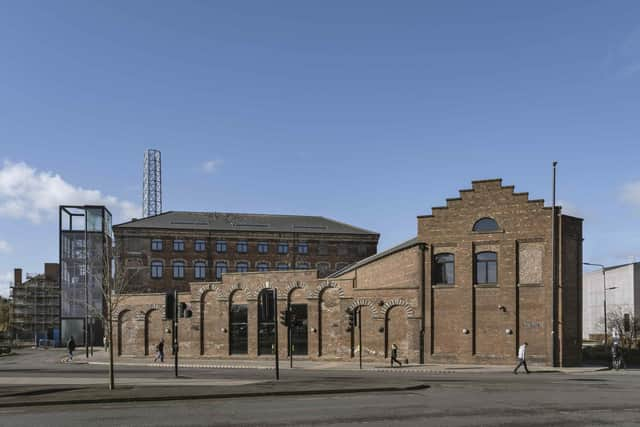Tileyard North: Old Yorkshire corn warehouse built in 1800 to be transformed into 'creative industries hub'
Phoenix Mill is the oldest part of the Rutland Mills complex, which is currently being transformed into Tileyard North on the city’s waterfront.
Historic England this week announced a £625,000 grant to renovate the Grade II-listed building as part of the project.
Advertisement
Hide AdAdvertisement
Hide AdDating from the turn of the 19th century, Phoenix Mill was a corn warehouse in its early days, one of several grain stores which lined the Calder and Hebble Navigation, the waterway that was used to transport corn to the rest of the north.


It was later extended and converted into first a corn and then a textile mill, eventually being absorbed into Rutland Mills in the 1870s.
Rutland Mills lay empty and decaying after its closure in 1999 until the site was purchased by City and Provincial Properties for redevelopment.
The first phase of Tileyard North is already open, providing studio and events space for creative industries.
Advertisement
Hide AdAdvertisement
Hide AdPhoenix Mill’s refurbishment is part of the second phase, which will see office space, bars and a restaurant created.
Historic England chief executive Duncan Wilson said: “After lying derelict for many years, it’s wonderful to see that Phoenix Mill is now rising from the ashes and will soon be given new life as an integral part of the fantastic Tileyard North.
“I applaud the bold vision of City and Provincial Properties who have rescued an important part of Wakefield’s industrial heritage and reshaped it into an engine of the city’s future prosperity.”
Repurposing former textile mills in Yorkshire is a Historic England priority, with the buildings identified as having potential to fill housing needs and create new jobs. Around 237 sites are either vacant or underused.
Advertisement
Hide AdAdvertisement
Hide AdHowever, these mills have suffered from issues including arson, vandalism and absentee landlords, which has affected opportunities to redevelop them.
It is estimated that if converted, they could provide up to 9,000 new homes on brownfield land that is often close to rivers, canals and rail links.
